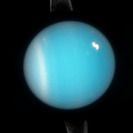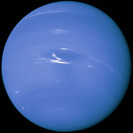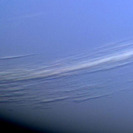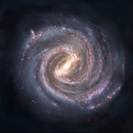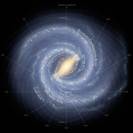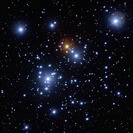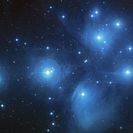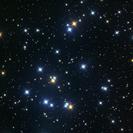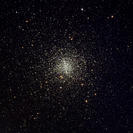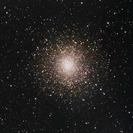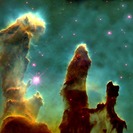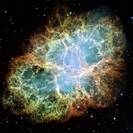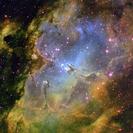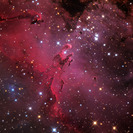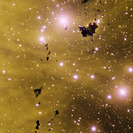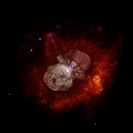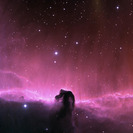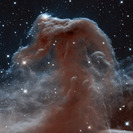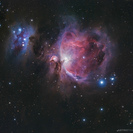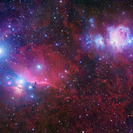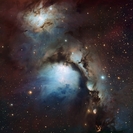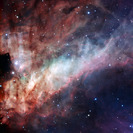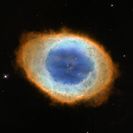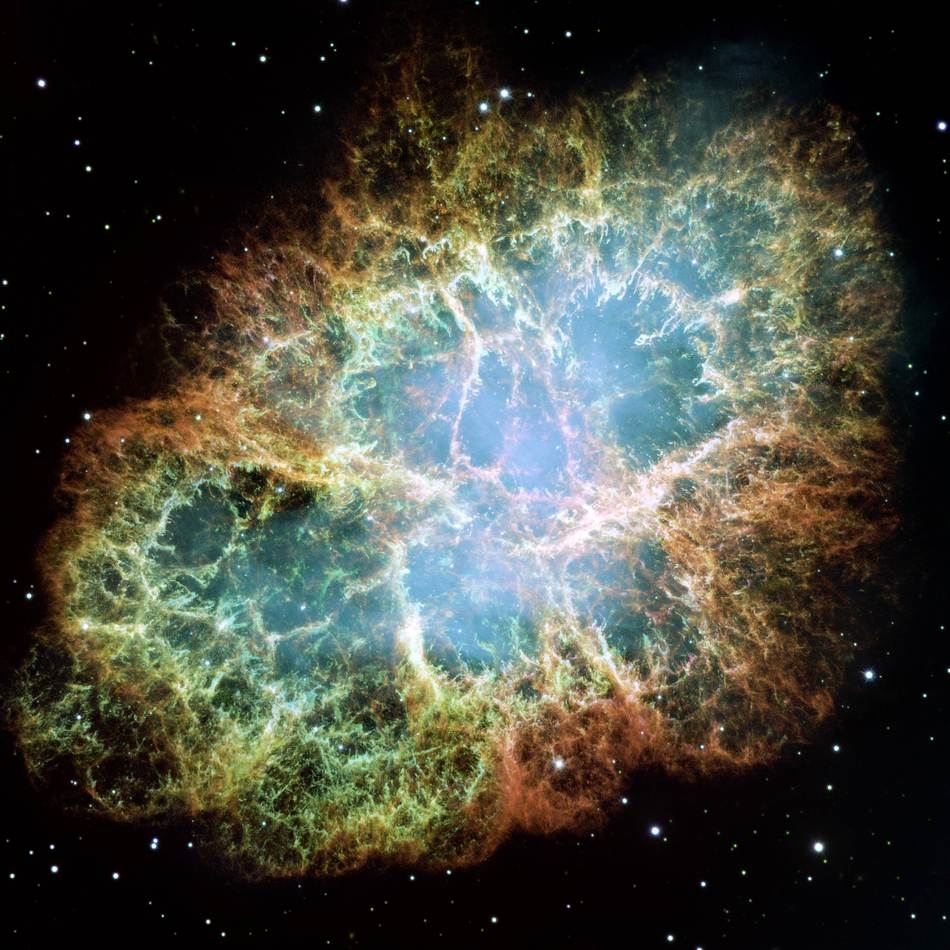The Crab Nebula is a 6500 light-years distant remnant of a supernova from the year 1054 and was so bright that it was noted by Chinese, Arab and Japanese astronomers. The former star had a mass of approximately 10 solar masses; that's big enough to cause a huge explosion at the end of the star’s lifetime. The nebula now has a diameter of 11 light-years and continues to expand at a rate of 1500 km per second. If you are interested what such a nebula looks like 40,000 years after the supernova occurred, you can see an image of Simeis 147
The colours you can see correspond to different elements that were blown away after the explosion. Orange, for example, is hydrogen; green is sulphur and red is oxygen. All these elements have been "cooked" (by nuclear fusion) during the lifetime of the star. This is lucky - since the atoms you are made of have also been created and blown away by a star in the distant past.
No stars with supernovae means no Earth, no water and no life.
If you wonder why the centre of the nebula is glowing with a bluish colour: this is because during the explosion the star was not completely destroyed. A neutron star has been left in the centre of the nebula. This neutron star is very small (just 28 - 30 km in diameter instead of the millions of km of the former star) and is so dense, that one cubic centimetre - or let's say the size of a sugar cube - has the same mass as 50 million elephants... or all the cars in the USA. Since the neutron star spins around its axis at a rate of 30 times per second (like the Earth, but much faster) and it has a strong magnetic field too (like the Earth, but much stronger) the neutron star acts as a huge dynamo. Electrons in the vicinity of the neutron star are accelerated to almost the speed of light and at this speed they emit a bluish light, also called synchrotron radiation.
Sun.org also has a stunning video simulating the Crab Nebula supernova explosion - don't miss it, it's worth a look!
If interested, read more about: Supernova - Neutron star
